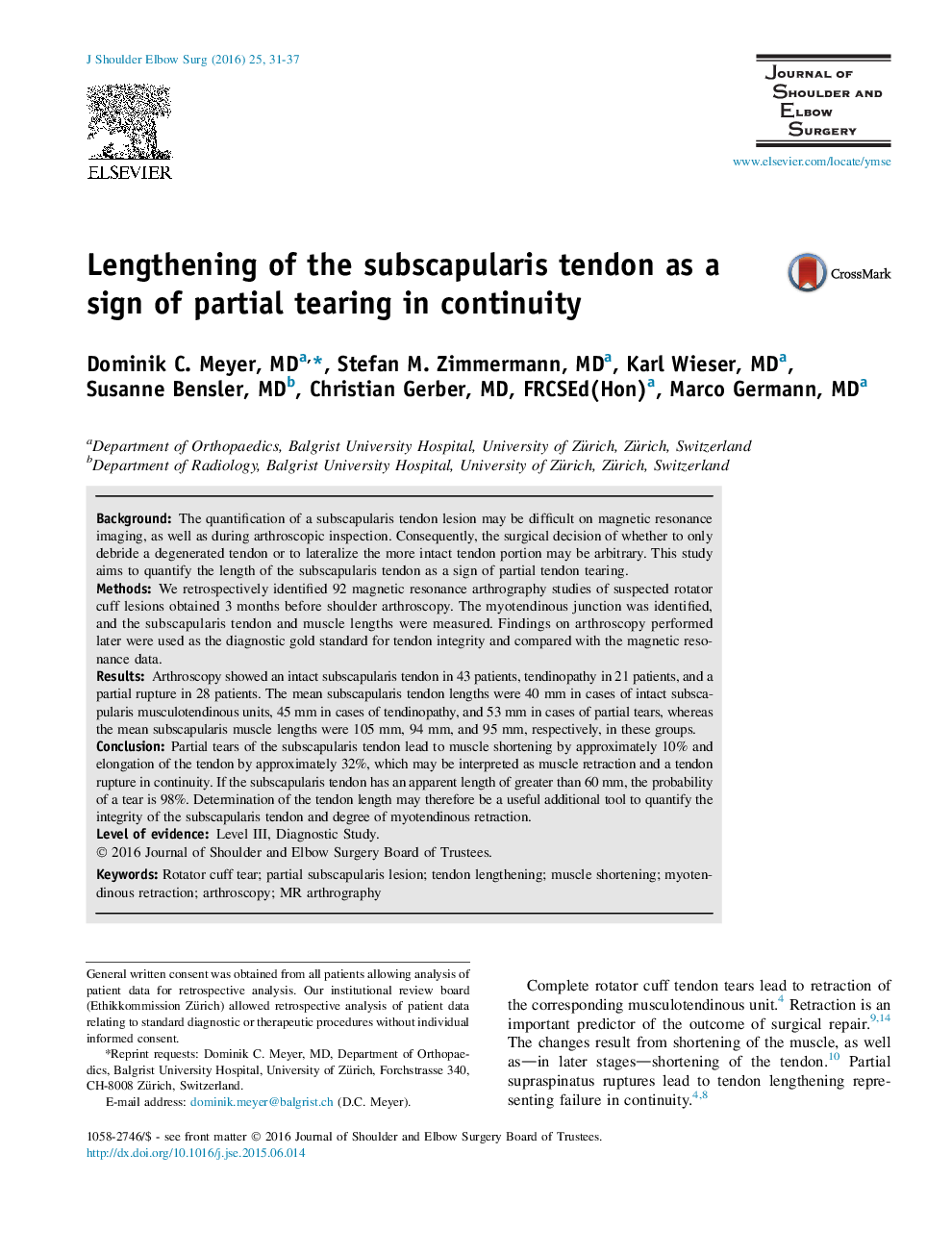| Article ID | Journal | Published Year | Pages | File Type |
|---|---|---|---|---|
| 6210838 | Journal of Shoulder and Elbow Surgery | 2016 | 7 Pages |
BackgroundThe quantification of a subscapularis tendon lesion may be difficult on magnetic resonance imaging, as well as during arthroscopic inspection. Consequently, the surgical decision of whether to only debride a degenerated tendon or to lateralize the more intact tendon portion may be arbitrary. This study aims to quantify the length of the subscapularis tendon as a sign of partial tendon tearing.MethodsWe retrospectively identified 92Â magnetic resonance arthrography studies of suspected rotator cuff lesions obtained 3Â months before shoulder arthroscopy. The myotendinous junction was identified, and the subscapularis tendon and muscle lengths were measured. Findings on arthroscopy performed later were used as the diagnostic gold standard for tendon integrity and compared with the magnetic resonance data.ResultsArthroscopy showed an intact subscapularis tendon in 43 patients, tendinopathy in 21 patients, and a partial rupture in 28 patients. The mean subscapularis tendon lengths were 40Â mm in cases of intact subscapularis musculotendinous units, 45Â mm in cases of tendinopathy, and 53Â mm in cases of partial tears, whereas the mean subscapularis muscle lengths were 105Â mm, 94Â mm, and 95Â mm, respectively, in these groups.ConclusionPartial tears of the subscapularis tendon lead to muscle shortening by approximately 10% and elongation of the tendon by approximately 32%, which may be interpreted as muscle retraction and a tendon rupture in continuity. If the subscapularis tendon has an apparent length of greater than 60Â mm, the probability of a tear is 98%. Determination of the tendon length may therefore be a useful additional tool to quantify the integrity of the subscapularis tendon and degree of myotendinous retraction.
